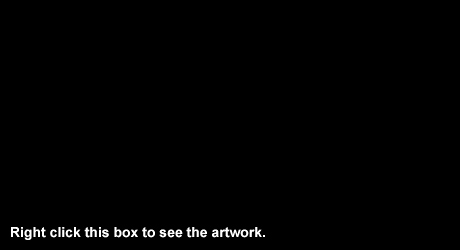English for Art and Design: Focal Point / Emphasis (1996 / 2012)
English for Art & Design | 24 June 2012
Click to see the English for Art and Design overview page.
Focal Point and Emphasis
Are you a teacher, researcher, working in the art/design industries, or a student of English for Art and Design? Join our new quarterly newsletter to learn the latest news and views on the English for Specific Purposes sub-field. Go to the contact page and put "English for Art and Design" in the message.
Most, but not all, works of visual art, design, and architecture have focal points. The method to create a focal point and / or emphasis is some combination of the artist’s manipulation of the visual elements. These methods, or techniques, are outlined in the focal point checklist in Exercise 2. [For authentic textbooks readings about focal point and emphasis, see Rita Gilbert’s Living with Art (1995) or comparable.]
Definitions:
emphasis (noun); to emphasize (verb): when the viewer’s attention will be centered more on certain parts of an artwork or design than on others, or "focus on many".
focal point (1) (adjective - noun); to focus (verb): when the viewer’s attention will be concentrated on a specific spot, or "focus on one".
focal point (2) (adjective - noun); to focus (verb): one of the areas of emphasis in an artwork or design.
Exercise 1: Focal Point (1) or Focal Point (2)?
Review the definitions above. Read the following sentences. Is the writer expressing the idea of focal point (1), focal point (2), or is it unclear? Write 1, 2, or U on the line.
___ In this work, we focus on the face of the bird in the bottom left-hand corner, and we also focus on the group of three birds in the background.
___ I like this focal point.
___ With her use of directional lines and color contrast, she makes the house the focal point in this work.
Exercise 2: Where are the focal points?
2A: Reading and visual comprehension. Read below and look at the Yolanda Cuomo’s design for Laurie Anderson’s CD, The Ugly One with the Jewels. Then do the exercises that follow.
What are the focal points in the work? Explain with some details.
Most important part(s):
1 - Laurie Anderson’s face near the center of the image, then her right hand playing the violin, and the bow
2 - The bright red circular space to the right
3 - The shadowed figure above, the face, with the microphone
Methods to create emphasis / the focal point |
|||
| Direction of lines | |||
| Gestures by depicted objects / persons | |||
| Position in composition (Where is it?) | |||
| Uses the lightest / darkest color / value in the work | |||
| Manipulation of light | |||
| Isolation | |||
| By contrast. (This can mean light against dark, big against small, textured against smooth, or color against gray). | |||
| Use of subject matter / content. (In general, shocking scenes, human figures. For the human figure, it is usually the face. | |||
(Additional activity— authentic reading at artdesigncafe.com: Read the interview of Yolanda Cuomo; she talks about her design for The ugly one with the jewels CD cover.)
2B: Focal point in Leonardo da Vinci’s Last Supper.
Most important part: __________________________
Which methods help create the focal point in the work? Put an X next to your answer. Explain with some details.
Methods to create emphasis / the focal point |
|||
| Direction of lines | |||
| Gestures by depicted objects / persons | |||
| Position in composition (Where is it?) | |||
| Uses the lightest / darkest color / value in the work | |||
| Manipulation of light | |||
| Isolation | |||
| By contrast. (This can mean light against dark, big against small, textured against smooth, or color against gray). | |||
| Use of subject matter / content. (In general, shocking scenes, human figures. For the human figure, it is usually the face. | |||
2C: Focal point / emphasis in Francisco de Goya’s The Third of May.

Francisco de Goya. The Third of May, (1814). Oil on canvas, 268 × 347 cm (106 × 137 in). Museo del Prado, Madrid, Spain.
Most important part: __________________________
Which method helps to create the focal point in the work? Put an X next to your answer. Explain with some details.
Methods to create emphasis / the focal point |
|||
| Direction of lines | |||
| Gestures by depicted objects / persons | |||
| Position in composition (Where is it?) | |||
| Uses the lightest / darkest color / value in the work | |||
| Manipulation of light | |||
| Isolation | |||
| By contrast. (This can mean light against dark, big against small, textured against smooth, or color against gray). | |||
| Use of subject matter / content. (In general, shocking scenes, human figures. For the human figure, it is usually the face. | |||
Now look at the painting again. Do you see two more points of emphasis? How did Francisco de Goya make these?
English for Art and Design: Focal Point / Emphasis - 1 | 2
